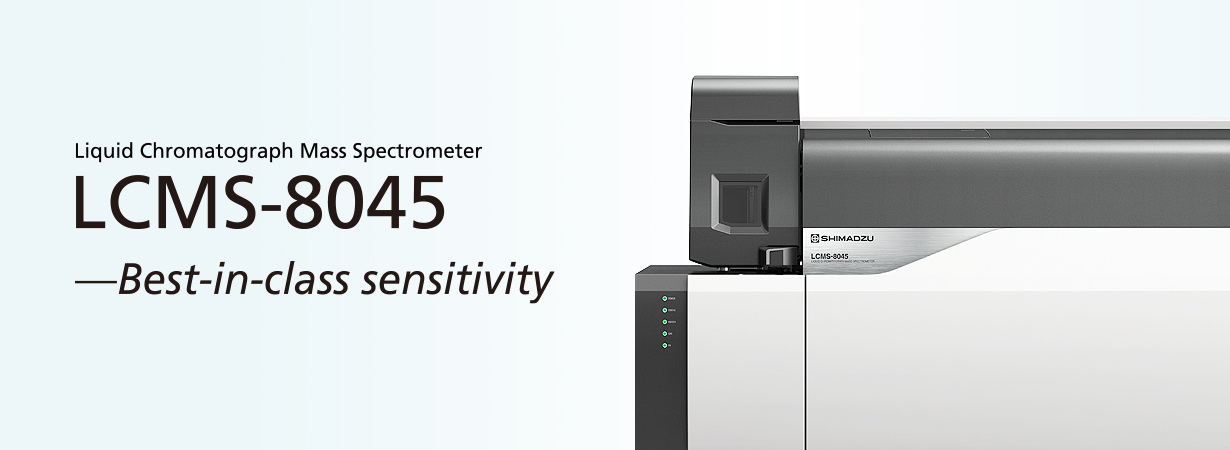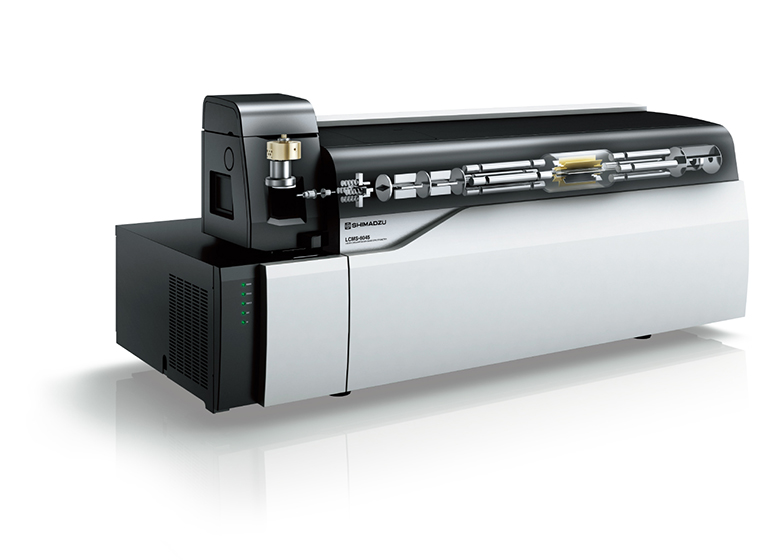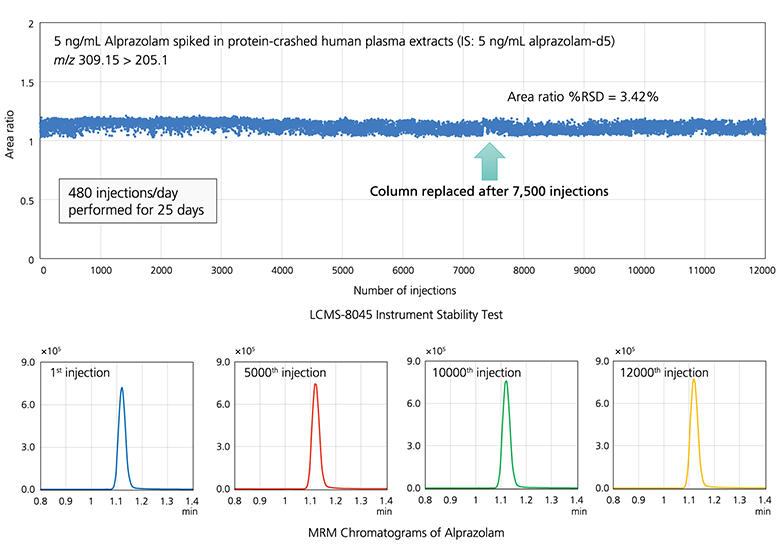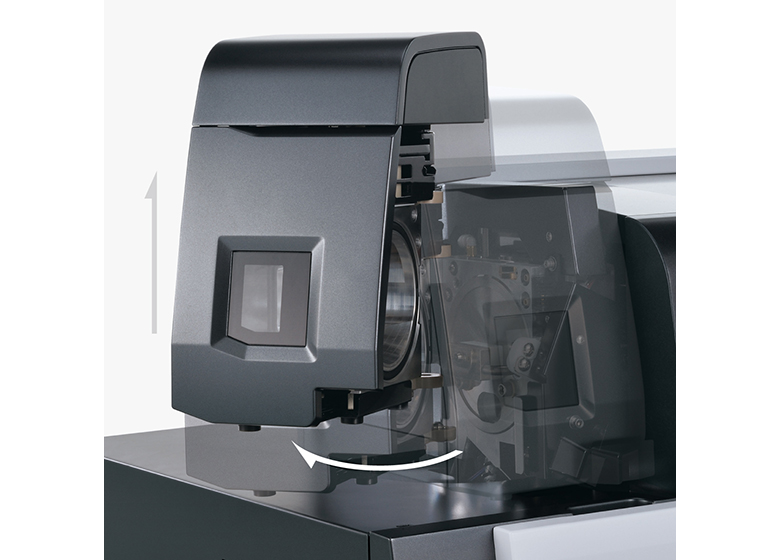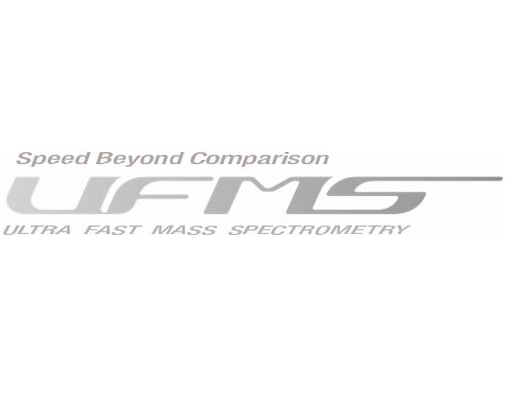Equipped with a heated ESI probe, the LCMS-8045 has the highest sensitivity in its class.
LCMS-8045
High Performance Liquid Chromatograph Triple Quadrupole Mass Spectrometer
Equipped with a heated ESI probe, the LCMS-8045 has the highest sensitivity in its class. The heated ESI probe, high-temperature heating block, desolvation line (DL) and drying gas, all act to promote desolvation and prevent contamination due to the penetration of liquid droplets into the MS unit. This improves the robustness, so reliable and high-accuracy data can be obtained over the long term. The LCMS-8045 also achieves the world's fastest scan speed (30,000 u/sec) and polarity switching speed (5 msec). These enable ultra-high-speed, high-sensitivity analysis. The excellent cost performance of this system is demonstrated in food safety, environmental analysis, and other quantitative analyses, it can be upgraded to the LCMS-8060.
Features
-
Accomplishes Both High Sensitivity and Ultra-High-Speed Detection
Equipped with a heated ESI probe, the LCMS-8045 has the highest sensitivity in its class. -
Shimadzu's MS interface includes a high-sensitivity heated ESI source, heated capillary sample introduction, and proprietary ion transfer optics. These design features combine to produce robust MS performance.
-
Easy System Maintenance Reduces Downtime
As with Shimadzu's other triple quad systems, maintaining the LCMS-8045 is simple. Replacing the desolvation line (DL) and ESI capillary is quick and easy. -
Latest Webinar
-

2021-02-18
Food Contact Materials - GRAS or Gross?
Food Contact Materials (FCM) are any materials that come in contact with food during processing, storage, preparation or serving. The safety of these FCMs must be evaluated as they can migrate into the food supply and contaminate the food with compounds like Per-and Polyfluorinated substances (PFAS), mineral oils (MOSH/MOAH), and leachables/extractables from plastics containers (bisphenol A, heavy metals). This webinar will provide an introduction to FCMs, discuss the challenges faced by the food industry, and present the latest analytical technologies for FCMs.
External Link
View Details



